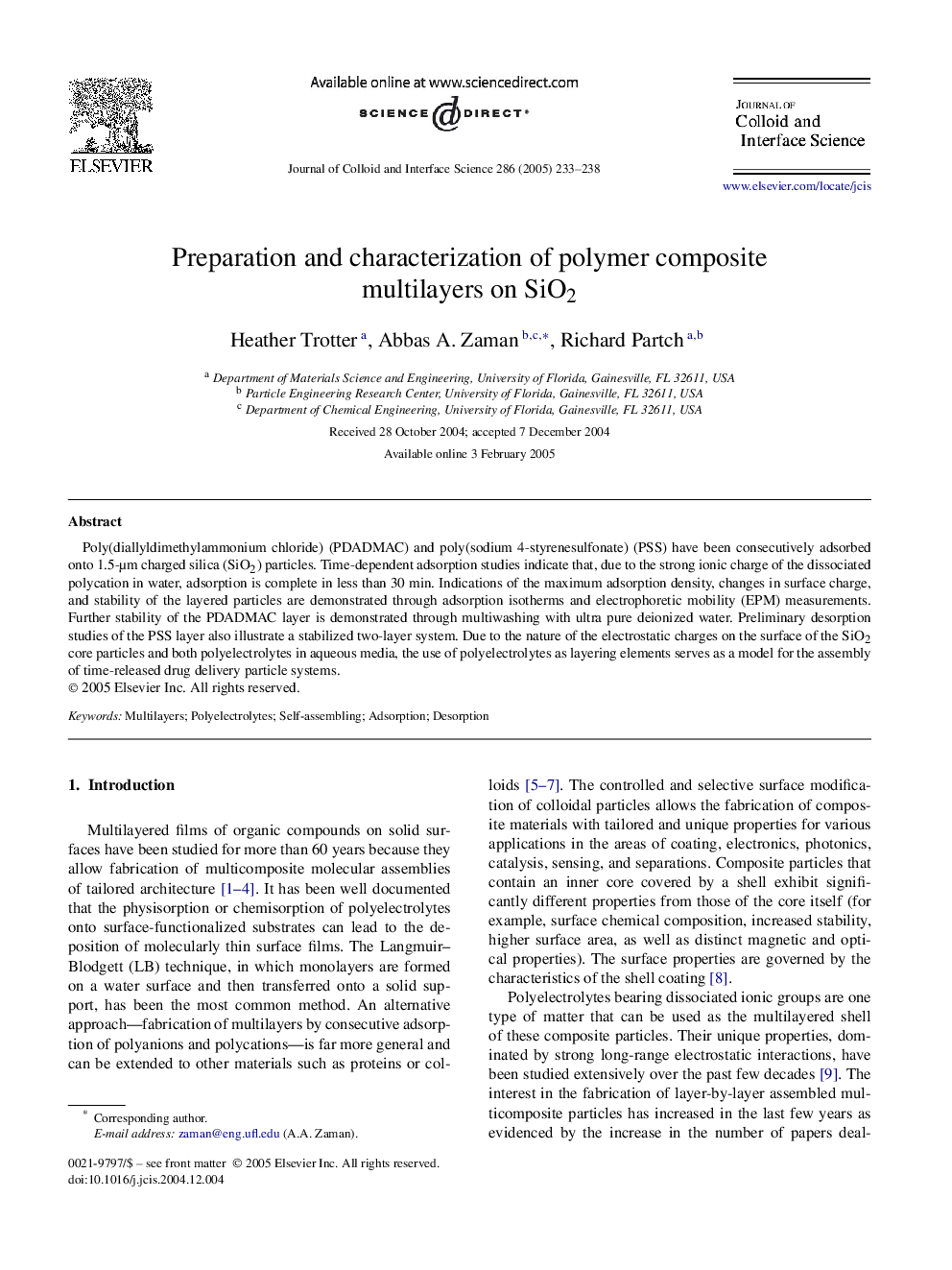| Article ID | Journal | Published Year | Pages | File Type |
|---|---|---|---|---|
| 10377693 | Journal of Colloid and Interface Science | 2005 | 6 Pages |
Abstract
Poly(diallyldimethylammonium chloride) (PDADMAC) and poly(sodium 4-styrenesulfonate) (PSS) have been consecutively adsorbed onto 1.5-μm charged silica (SiO2) particles. Time-dependent adsorption studies indicate that, due to the strong ionic charge of the dissociated polycation in water, adsorption is complete in less than 30 min. Indications of the maximum adsorption density, changes in surface charge, and stability of the layered particles are demonstrated through adsorption isotherms and electrophoretic mobility (EPM) measurements. Further stability of the PDADMAC layer is demonstrated through multiwashing with ultra pure deionized water. Preliminary desorption studies of the PSS layer also illustrate a stabilized two-layer system. Due to the nature of the electrostatic charges on the surface of the SiO2 core particles and both polyelectrolytes in aqueous media, the use of polyelectrolytes as layering elements serves as a model for the assembly of time-released drug delivery particle systems.
Related Topics
Physical Sciences and Engineering
Chemical Engineering
Colloid and Surface Chemistry
Authors
Heather Trotter, Abbas A. Zaman, Richard Partch,
